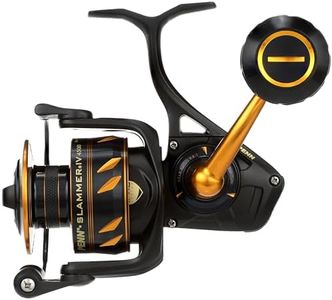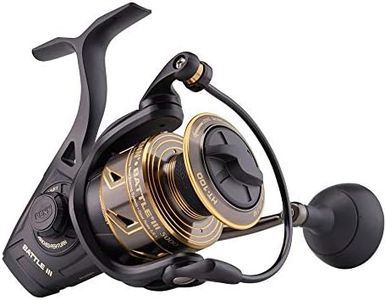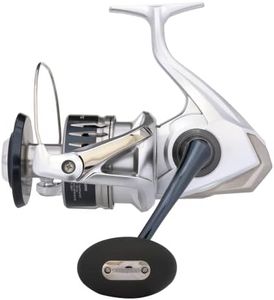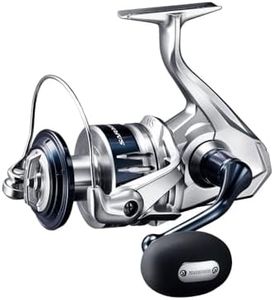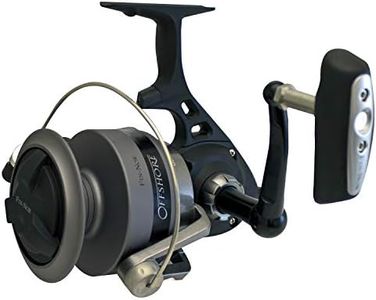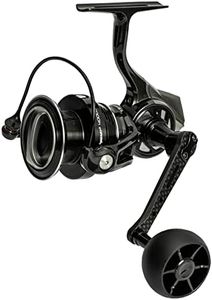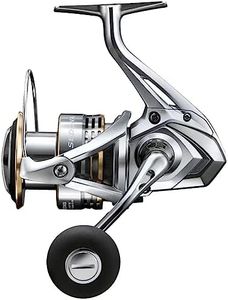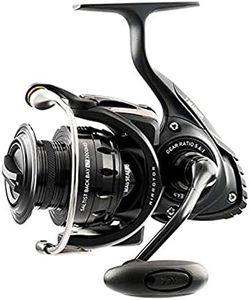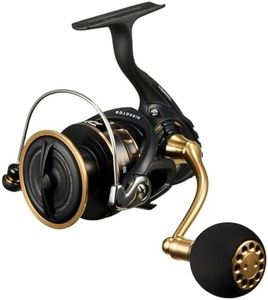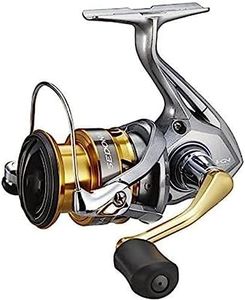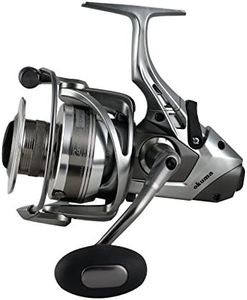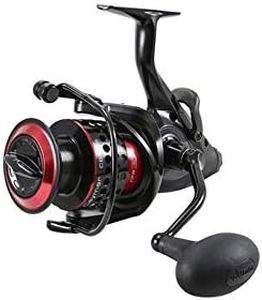We Use CookiesWe use cookies to enhance the security, performance,
functionality and for analytical and promotional activities. By continuing to browse this site you
are agreeing to our privacy policy
10 Best Saltwater Spinning Reels
From leading brands and best sellers available on the web.By clicking on a link to a third party's website, log data is shared with that third party.
Buying Guide for the Best Saltwater Spinning Reels
Choosing the right saltwater spinning reel can make a huge difference in your fishing experience. The best reel for you will depend on where you fish, what species you target, and your overall fishing style. Since saltwater conditions are harsher than freshwater, durability and protection from corrosion are important, as well as reel size and strength. Thinking about where you’ll be fishing—such as from the shore, a pier, or a boat—and what kind of fish you hope to catch can help guide you toward the features that matter most for your needs.Line CapacityLine capacity refers to how much fishing line the reel can hold, usually measured in yards or meters at a specific pound-test rating. This is important because saltwater fish often run farther and fight harder than freshwater fish, so you need enough line to handle those long runs. Reels with higher line capacities are ideal for targeting large species or fishing from boats, while more moderate capacities suit inshore or pier fishing where the fish are smaller and don't run as far.
Reel SizeReel size is often indicated by a number (like 3000, 5000, etc.) and represents the overall bulk and line-holding ability of the reel. A smaller size is good for light tackle and smaller fish, such as when fishing in shallow or calm waters. Larger sizes are better for offshore fishing, bigger lures, and fighting strong, large fish. Consider what species you want to target and choose a reel size that matches the typical line strength and lure weight you’ll be using.
Gear RatioThe gear ratio indicates how many times the bail rotates around the spool with one turn of the handle. A higher ratio retrieves line faster but offers less power, which is handy for quickly reeling in fish or lures. A lower gear ratio gives you more cranking power, making it easier to fight big or stubborn fish but brings in line more slowly. If you need to retrieve lures quickly or chase fast-moving fish, go for a higher ratio; for catching large, strong fish, a lower ratio provides beneficial leverage.
Drag SystemThe drag system controls how much resistance a fish feels when pulling on the line, which helps tire out the fish and prevents your line from breaking. A smooth, strong, and reliable drag is essential for saltwater fishing due to the powerful runs saltwater fish can make. For lighter tackle and smaller fish, less drag pressure is needed, but for fighting large predators or fishing heavy cover, a strong drag system is crucial.
Corrosion ResistanceSaltwater is highly corrosive, so reels designed for this environment use materials and coatings that resist rust and salt damage. Look for reels built with sealed bearings, anodized finishes, and corrosion-resistant metals. If you fish regularly in saltwater or leave your gear exposed to the elements, higher levels of corrosion resistance will extend the lifespan and performance of your reel.
Ball BearingsBall bearings help the reel spin smoothly and support the moving parts inside the reel. More bearings usually mean smoother operation, but quality is more important than just the count. In saltwater reels, bearings should also be sealed or shielded to prevent salt intrusion. For a smoother and more durable reel, look for one with several sealed bearings, especially if you fish in rough or sandy conditions.
WeightThe weight of a reel affects comfort during long fishing sessions, especially if you cast often or hold your rod and reel all day. Lighter reels reduce fatigue but might sacrifice some strength, while heavier reels tend to be more robust for larger fish. Consider how you fish: if you move a lot or fish for long stretches without rest, lighter is better. If you mainly fight big fish where power is more important than comfort, a heavier reel might be appropriate.
Handle DesignThe handle on a spinning reel should fit comfortably in your hand and offer a secure grip, especially when wet. Some handles are designed for power and offer better leverage for fighting big fish, while others prioritize lightweight comfort for all-day casting. If you target powerful species, a sturdier, larger handle is helpful. If your trips focus on many casts for varied species, a handle with comfortable ergonomic design may serve you better.
